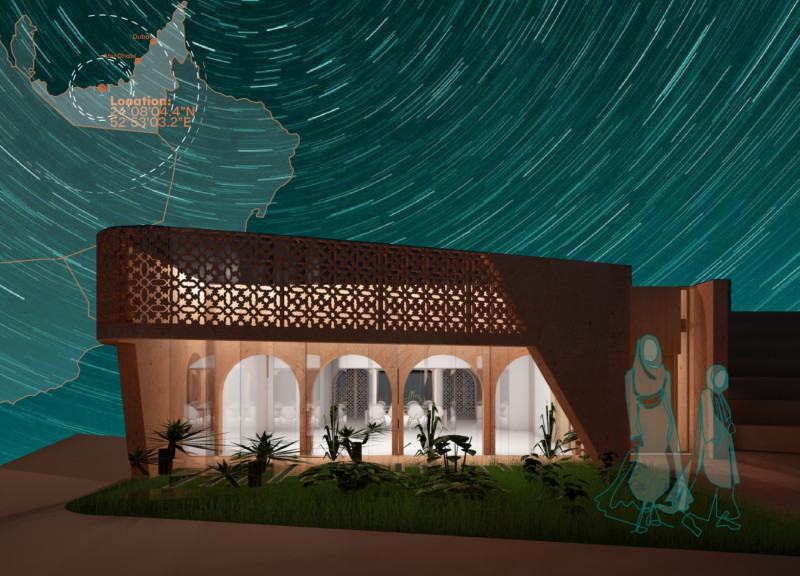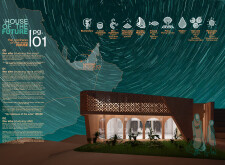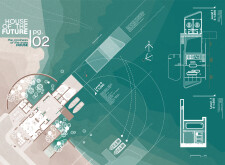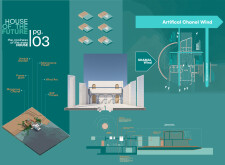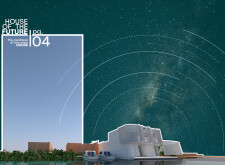5 key facts about this project
**Overview**
Situated in the United Arab Emirates, the "House of the Future" is designed with a focus on sustainability and local environmental factors. The architectural design reflects an integration of contemporary methods with elements significant to the cultural heritage of the region. By considering local climate conditions, this project aims to enhance the quality of life for its inhabitants while fostering a deep connection to the surrounding natural environment.
**Biomimicry and Cultural Integration**
The architectural approach employs biomimicry to draw inspiration from natural systems, optimizing energy use through strategic ventilation and light management. The project's design incorporates traditional UAE architectural features, such as shaded courtyards and intricate latticework, linking modern aesthetics to the region's historical context. This approach not only respects local customs but also encourages community wellness by creating tranquil and functional living spaces.
**Material and Spatial Strategies**
Utilizing a spectrum of local and sustainable materials, the design features clay and bio-materials like Calia-bacteria bricks, highlighting environmentally conscious building practices. Recycled materials, such as brim and salt panels, serve both functional and aesthetic roles. The layout promotes effective zoning and circulation, integrating communal spaces with private areas and biophilic elements such as herbal and mangrove gardens, which enhance local biodiversity. Architectural innovations, including wind arcs and geothermal energy systems, reinforce the project's commitment to energy efficiency and adaptability.


